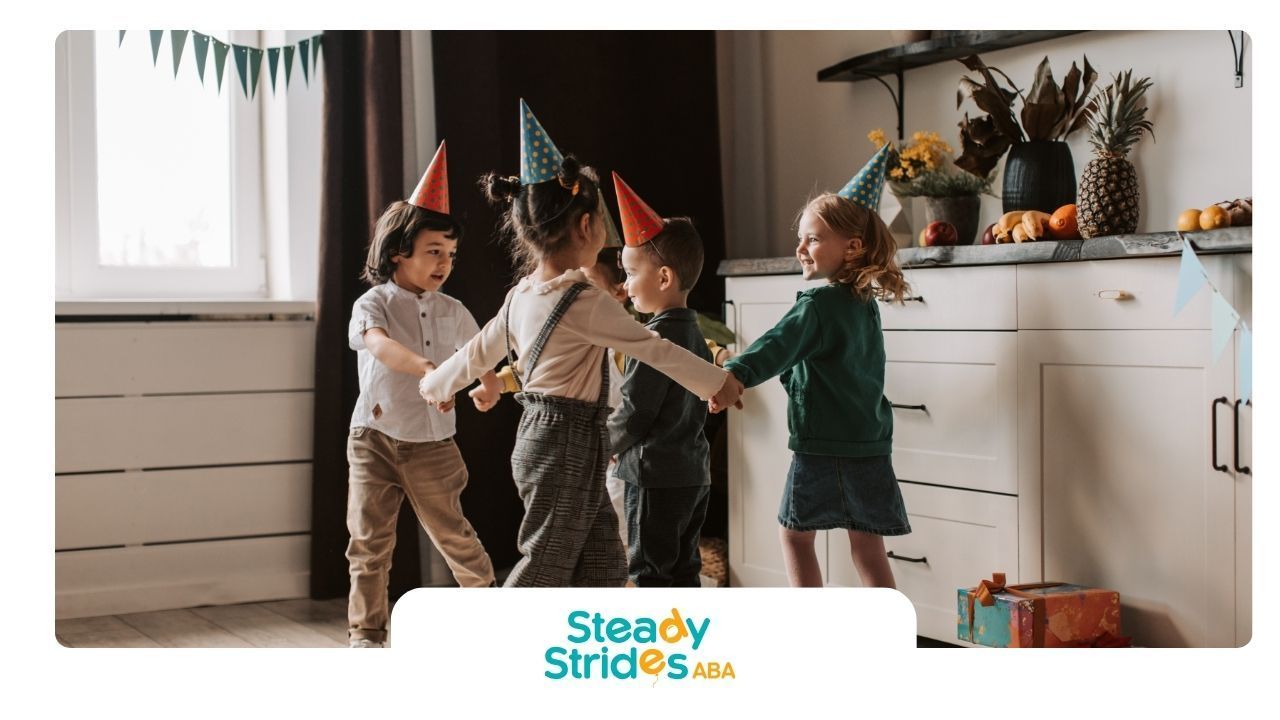The body content of your post goes here. To edit this text, click on it and delete this default text and start typing your own or paste your own from a different source.
Step 1: Learn About Your Options
Find the Right Fit for Your Family
Not all ABA providers are the same. Some key things to consider when searching include:
- Credentials: Look for Board Certified Behavior Analysts (BCBAs) and well-trained Registered Behavior Technicians (RBTs).
- Experience: Does the agency have experience with children at your child’s developmental level?
- Philosophy: Does their approach feel respectful and supportive of your child’s individuality?
- Flexibility: Are they able to create personalized plans based on your child’s unique needs?
At Steady Strides ABA, for example, we believe that therapy should always be individualized and family-centered—because your child’s journey deserves nothing less.
Step 2: Schedule an Initial Consultation
Your Story Matters
Before starting therapy, the first step is usually a consultation—either in-person or over the phone. During this meeting, we’ll talk about your child’s history, strengths, and challenges. We’ll also explore your goals and hopes for therapy.
What you might discuss:
- Developmental milestones
- Communication abilities
- Daily routines
- Behavior concerns
- Family priorities
This is also your opportunity to ask questions and get a feel for how the provider communicates and connects with you.
Step 3: Obtain an ABA Therapy Assessment
A Tailored Roadmap
An ABA assessment helps create a personalized therapy plan for your child. The assessment usually involves:
- Direct observation of your child
- Structured activities to gauge skills
- Interviews with parents and caregivers
- Standardized assessment tools
The goal? To understand where your child is today so we can build a supportive plan for tomorrow.
From this assessment, your BCBA will create an individualized treatment plan outlining skill targets, therapy hours, and methods tailored to your child.
Step 4: Get Authorization and Insurance Approval
Navigating the Paperwork
Many families use insurance to help cover the costs of ABA therapy. The process usually involves:
- Submitting a diagnosis of autism (from a licensed psychologist, developmental pediatrician, or neurologist)
- Providing the completed ABA assessment and treatment plan
- Gaining insurance approval for a specific number of therapy hours
Don’t worry—at Steady Strides ABA, we guide families through every step of the insurance process to make it as smooth as possible.
Step 5: Begin ABA Sessions
Starting Strong
Once insurance is in place and the therapy plan is approved, it’s time to start sessions! A few things you can expect in the early weeks:
- Gradual build-up: Sessions may start short and build over time to help your child adjust.
- Parent involvement: You’ll often have opportunities to observe, participate, and learn strategies to use at home.
- Data collection: Therapists carefully track your child’s progress to ensure goals are being met and adjustments are made as needed.
Starting ABA therapy is a big decision—and a beautiful investment in your child's future. At Steady Strides ABA, we approach each child and family with care, respect, and a commitment to meaningful, lasting progress.
If you're ready to explore how ABA therapy can help your child thrive, we’d love to connect with you. Let’s take that first step together.
FAQs
How long does it take to get started with ABA therapy?
The full process—from initial consultation to starting sessions—can take several weeks, depending on assessment scheduling, insurance approvals, and availability. At Steady Strides ABA, we do everything we can to move the process forward efficiently while making sure every step is thorough.
What should I bring to the first consultation?
Bringing any relevant documents (diagnostic reports, Individualized Education Plans (IEPs), or previous evaluations) can help paint a full picture of your child’s needs and strengths.
Will I be involved in my child’s therapy?
Absolutely. Parent involvement is crucial. We work closely with families to teach strategies, celebrate progress, and ensure that the skills learned in therapy transfer to everyday life.
Sources:
- https://www.sciencedirect.com/science/article/abs/pii/S1750946720301665
- https://pmc.ncbi.nlm.nih.gov/articles/PMC9458805/
- https://www.autismspeaks.org/applied-behavior-analysis
- https://my.clevelandclinic.org/health/treatments/25197-applied-behavior-analysis
- https://www.psychologytoday.com/us/therapy-types/applied-behavior-analysis
- https://www.autismparentingmagazine.com/parents-aba-therapy-home/













